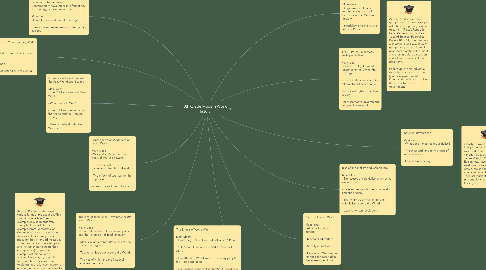10th Grade Modern World History
by Matthew Lauer

1. The Effects of World War I Main Ideas: - The Treaty of Versailles and Wilson's 14 Points - Self Determination in the Middle East and Africa - The effects of World War I on ordinary people, the "lost generation" - The financial impact of World War I, specifically in Germany.
2. The Rise of Totalitarian Governments after World War I Main Ideas: - Financial burden of the interwar years and the "promise" of Totalitarianism - Main similarities and differences of new government types. - Totalitarian ideology around the World. - The rise of Hitler and the National Socialists, i.e. Nazis
3. International Developments in the Post–World War II World Main Ideas: - The Cold War's roots in World War II - What is a Cold War? - The Cold War's effect around the World and the Domino Theory. - How and why did the Cold War end?
4. Nation-Building in the Contemporary World Main Ideas: - The geopolitical structure of the post-Cold War World - Regional Hegemony - Modern causes of instability in the world
5. Economic Integration and Contemporary Revolutions in Information, Technology, and Communications Main Ideas: - Globalization and the Internet Age - Terrorism and extremism in contemporary society.
6. Activity: Present students with various forms of propaganda. This should include Nazi/Fascist examples like segments from Triumph of the Will, but also examples from Democratic or Communist nations. Have students work as a class to analyze each piece for their intended message. Then break students up into pairs and instruct them to create their own (positive) propaganda. Examples of this could be anti-smoking, vegan, or public transportation. As students are deciding meet with each group to ensure their topic is appropriate for a classroom setting.
7. Causes and Consequences of World War II Main Ideas: - World War II's causes, the goals of the Axis powers. - The effects of technological/mobilized warfare - The effects of total war on the populace. - Genocide and the Holocaust
8. 1750 - 1917: Revolutions Reshape the World Main Idea: - How the Enlightenment responds to the Divine Right of Kings - The 'social contract' and its relation to ordinary people - Individual rights in modern society - Representative government and political revolution
9. The World in 1750 Main Ideas: - Organization of early modern society, as it will be compared to Modern Society - Feudalism and the Divine Right of Kings.
10. Activity: Split students into groups of 4-5. Present groups with their own primary source document (Plato's Republic, Hobbe's Leviathan, Locke's Second Treatise, Federalist Papers 10 or 51, or something else of the like). Have student groups compare the form of governance of their document and then in a class discussion come to a consensus of the ideal form. Follow up with an individual reflective paragraph on how tyrannical government influenced revolutions seeking these new forms of government.
11. Industrial Revolutions Main Ideas: - What does it mean to industrialize? - The short and long term effects of industrialization. - Idustrialized society
12. Activity: Show students video of how pre-industrial technology was used. After discussing the various new technologies of James Watt, Eli Whitney, Thomas Edison, etc. have students work in small groups to research, internet or text, the social and economic ramifications of the revolution. Then ask students to make short presentations about their findings.
13. Rise of Imperialism and Colonialism Main Ideas: - The causes of colonialism and how it worked - Race and religion's role in colonialism. Scientific racism. - The contrasts and similarities of colonialism around the World. - Latin American revolutions
14. Causes of World War I Main Ideas: - Alliance building in Europe - Mechanized warfare - Society at total war - How World War I ended Empires and resulted in the Russian Revolution


